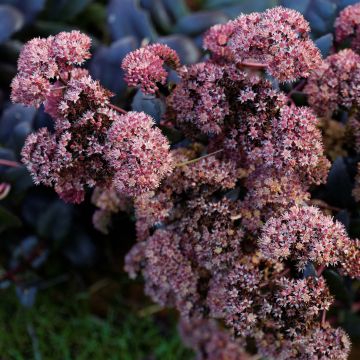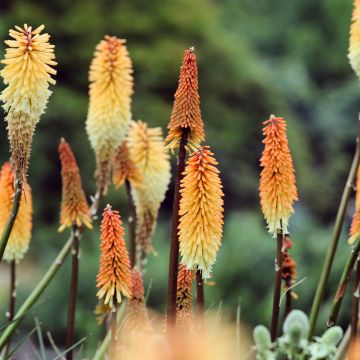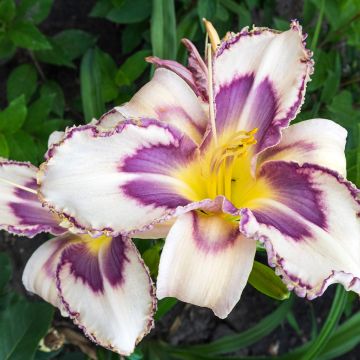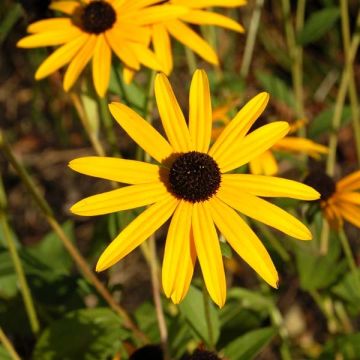

Sedum cauticola Robustum - Stonecrop


Sedum cauticola Robustum - Stonecrop
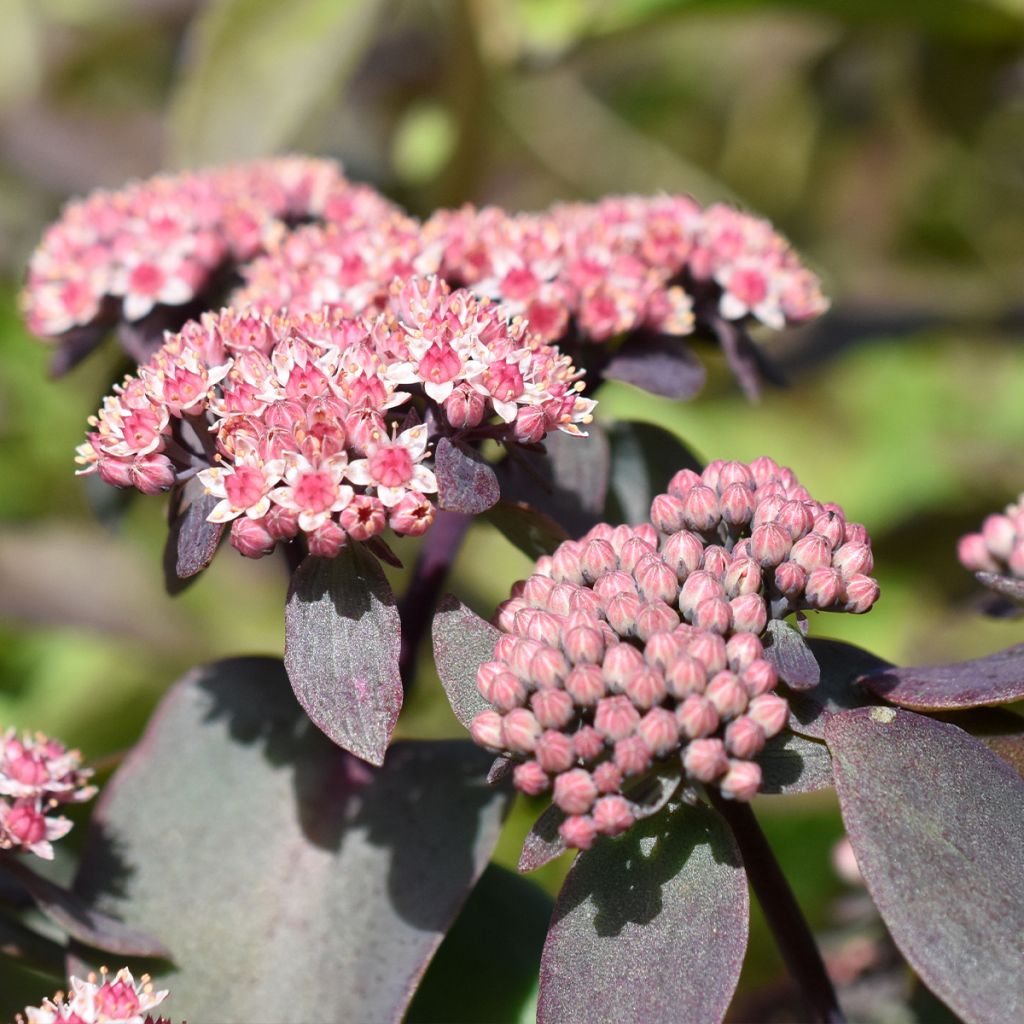

Sedum cauticola Robustum - Stonecrop
Sedum cauticola Robustum - Stonecrop
Sedum cauticola Robustum
Cliff-dwelling Stonecrop
Vine-plant received with a beautiful root system, I can't wait to see it grow and observe its colours as shown in your photos. Packaging in cardboard without plastic is appreciated as it gives the impression that the plants can breathe better during shipping, and I can attest to this based on previous orders.
Astrid, 27/10/2022
This item cannot be shipped to the selected country
Delivery charge from €5.90
More information
Schedule delivery date,
and select date in basket
This plant carries a 12 months recovery warranty
More information
We guarantee the quality of our plants for a full growing cycle, and will replace at our expense any plant that fails to recover under normal climatic and planting conditions.
From €5.90 for pickup delivery and €6.90 for home delivery
Express home delivery from €8.90.
Does this plant fit my garden?
Set up your Plantfit profile →
Description
Sedum cauticola 'Robustum' (synonym 'Ruby Glow') is a particularly colourful variety of sedum. This small, spreading perennial develops purple stems, and green-blue leaves that turn purple towards the end of the season. It produces beautiful corymbs of carmine pink flowers in late summer. Like many sedums, this one is an excellent plant for dry and poor, even chalky, soil. It can be used to decorate a rock garden, adorn the top of a wall, or be potted to flower on a patio.
Sedum cauticola 'Robustum' belongs to the Crassulaceae family, and is a horticultural selection derived from S. cauticola, native to Hokkaido Island in Japan. The plant forms a somewhat loose mat measuring approximately 15cm (6in) in height by 30 to 40cm (12 to 16in) in width. Described as stoloniferous, this sedum produces underground suckers that emerge more than 10cm (4in) away from the main plant as white, thin shoots. The vegetation consists of more or less prostrate, fleshy stems that range from light purple to darker purple. These stems bear small, succulent, opposite glaucous leaves that turn purple in autumn due to the cold. The foliage may persist if the winter is mild. Flowering occurs in September-October. It is abundant and almost entirely covers the foliage. The inflorescences are like short stems of bulbs where a multitude of small, star-shaped, bright pink-red flowers are tightly packed, attracting pollinating insects. These dry inflorescences remain decorative for a long time.
An ideal rock garden plant, Sedum 'Robustum' likes sun, and well-drained and poor soils. It is very hardy, tolerating temperatures down to -15°C (5°F) without any problems, as long as it is not in waterlogged soil during winter. Magnificent in a rock garden, it can be easily combined with other small sedums to create colourful cushion patchworks. It can also be paired with delospermas and basket-of-gold alyssums, for example. It also grows very well in pots.
Report an error about the product description
Sedum cauticola Robustum - Stonecrop in pictures


Flowering
Foliage
Plant habit
Botanical data
Sedum
cauticola
Robustum
Crassulaceae
Cliff-dwelling Stonecrop
Cultivar or hybrid
Other Sedum
Planting and care
Sedum cauticola 'Robustum' thrives in full sun, even blazing sun. It tolerates drought well. Plant it in ordinary, low-nutrient, even poor soil, that is rather dry and especially well-drained. This sedum is much less hardy in moist soil during winter. It is a low-maintenance plant. For planting, prepare a hole 30cm (12in) wide and deep and space it 30cm (12in) away from other plants. Do not water too much. At the end of winter, cut the withered or frost-damaged stems. S. cauticola does not tolerate winter moisture well, nor heavy, clayey, and compact soils. The ideal is a rockery planting, above a wall, or even in an elevated bed, in soil with a rocky tendency.
Planting period
Intended location
Care
-
, onOrder confirmed
Reply from on Promesse de fleurs
Summer flowering perennials
Haven't found what you were looking for?
Hardiness is the lowest winter temperature a plant can endure without suffering serious damage or even dying. However, hardiness is affected by location (a sheltered area, such as a patio), protection (winter cover) and soil type (hardiness is improved by well-drained soil).

Photo Sharing Terms & Conditions
In order to encourage gardeners to interact and share their experiences, Promesse de fleurs offers various media enabling content to be uploaded onto its Site - in particular via the ‘Photo sharing’ module.
The User agrees to refrain from:
- Posting any content that is illegal, prejudicial, insulting, racist, inciteful to hatred, revisionist, contrary to public decency, that infringes on privacy or on the privacy rights of third parties, in particular the publicity rights of persons and goods, intellectual property rights, or the right to privacy.
- Submitting content on behalf of a third party;
- Impersonate the identity of a third party and/or publish any personal information about a third party;
In general, the User undertakes to refrain from any unethical behaviour.
All Content (in particular text, comments, files, images, photos, videos, creative works, etc.), which may be subject to property or intellectual property rights, image or other private rights, shall remain the property of the User, subject to the limited rights granted by the terms of the licence granted by Promesse de fleurs as stated below. Users are at liberty to publish or not to publish such Content on the Site, notably via the ‘Photo Sharing’ facility, and accept that this Content shall be made public and freely accessible, notably on the Internet.
Users further acknowledge, undertake to have ,and guarantee that they hold all necessary rights and permissions to publish such material on the Site, in particular with regard to the legislation in force pertaining to any privacy, property, intellectual property, image, or contractual rights, or rights of any other nature. By publishing such Content on the Site, Users acknowledge accepting full liability as publishers of the Content within the meaning of the law, and grant Promesse de fleurs, free of charge, an inclusive, worldwide licence for the said Content for the entire duration of its publication, including all reproduction, representation, up/downloading, displaying, performing, transmission, and storage rights.
Users also grant permission for their name to be linked to the Content and accept that this link may not always be made available.
By engaging in posting material, Users consent to their Content becoming automatically accessible on the Internet, in particular on other sites and/or blogs and/or web pages of the Promesse de fleurs site, including in particular social pages and the Promesse de fleurs catalogue.
Users may secure the removal of entrusted content free of charge by issuing a simple request via our contact form.
The flowering period indicated on our website applies to countries and regions located in USDA zone 8 (France, the United Kingdom, Ireland, the Netherlands, etc.)
It will vary according to where you live:
- In zones 9 to 10 (Italy, Spain, Greece, etc.), flowering will occur about 2 to 4 weeks earlier.
- In zones 6 to 7 (Germany, Poland, Slovenia, and lower mountainous regions), flowering will be delayed by 2 to 3 weeks.
- In zone 5 (Central Europe, Scandinavia), blooming will be delayed by 3 to 5 weeks.
In temperate climates, pruning of spring-flowering shrubs (forsythia, spireas, etc.) should be done just after flowering.
Pruning of summer-flowering shrubs (Indian Lilac, Perovskia, etc.) can be done in winter or spring.
In cold regions as well as with frost-sensitive plants, avoid pruning too early when severe frosts may still occur.
The planting period indicated on our website applies to countries and regions located in USDA zone 8 (France, United Kingdom, Ireland, Netherlands).
It will vary according to where you live:
- In Mediterranean zones (Marseille, Madrid, Milan, etc.), autumn and winter are the best planting periods.
- In continental zones (Strasbourg, Munich, Vienna, etc.), delay planting by 2 to 3 weeks in spring and bring it forward by 2 to 4 weeks in autumn.
- In mountainous regions (the Alps, Pyrenees, Carpathians, etc.), it is best to plant in late spring (May-June) or late summer (August-September).
The harvesting period indicated on our website applies to countries and regions in USDA zone 8 (France, England, Ireland, the Netherlands).
In colder areas (Scandinavia, Poland, Austria...) fruit and vegetable harvests are likely to be delayed by 3-4 weeks.
In warmer areas (Italy, Spain, Greece, etc.), harvesting will probably take place earlier, depending on weather conditions.
The sowing periods indicated on our website apply to countries and regions within USDA Zone 8 (France, UK, Ireland, Netherlands).
In colder areas (Scandinavia, Poland, Austria...), delay any outdoor sowing by 3-4 weeks, or sow under glass.
In warmer climes (Italy, Spain, Greece, etc.), bring outdoor sowing forward by a few weeks.








































